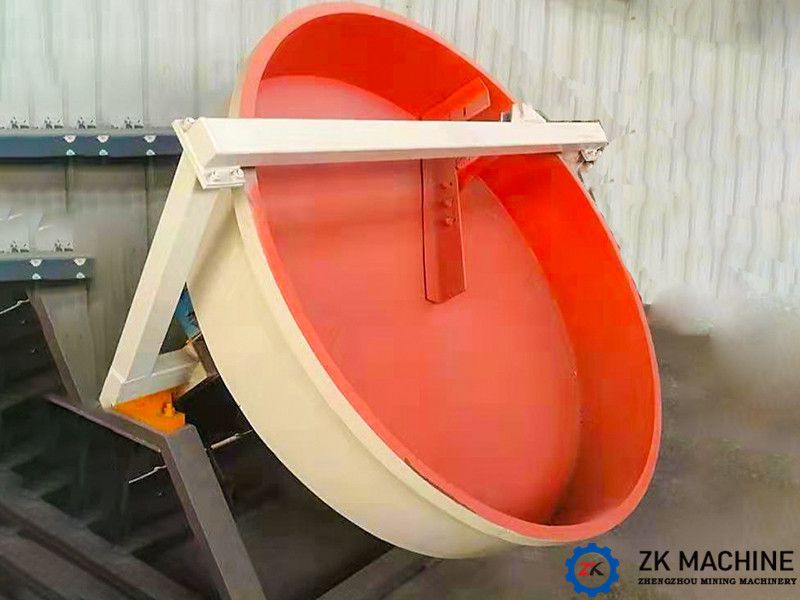I. Introduction to the Disc Pelletizer
The disc pelletizer is a critical piece of equipment widely used in industries such as metallurgy, chemicals, and building materials. Its primary function is to transform fine-grained or powdered materials into spherical pellets with consistent strength and uniformity. By utilizing a rotating disc and a controlled water spray system, the device enables materials to roll on the disc surface and gradually form pellets.
II. Working Principle
The core component of the disc pelletizer is its tilted circular disc. Material is continuously fed onto the rotating disc and moves downward along the disc surface under gravity. Simultaneously, an appropriate amount of water (or binder) is evenly sprayed onto the material via nozzles, promoting adhesion between particles. As the disc rotates, the material repeatedly rolls and aggregates into spherical shapes. Due to their weight, the pellets eventually roll to the edge of the disc and exit through the discharge port.
III. Main Components
1. Disc: The primary working area for pellet formation. Its tilt angle and rotation speed can be adjusted based on production requirements.
2. Drive Unit: Includes a motor and gear reducer, providing rotational power to the disc.
3. Water Spray System: Ensures proper moisture distribution to enhance particle bonding.
4. Scraper Device: Cleans residual material adhering to the disc’s inner wall, maintaining efficiency and operational cleanliness.
IV. Applications
1. Metallurgical Industry: Used for pelletizing iron ore powder, limestone powder, and other raw materials to improve furnace charge permeability and smelting efficiency.
2. Chemical Industry: Applied in producing fertilizers, catalysts, and other products to enhance quality and performance.
3. Building Materials Industry: Utilized in cement plants to process industrial waste residues into eco-friendly construction materials, offering both economic and environmental benefits.
V. Conclusion
The disc pelletizer plays a vital role across multiple industries due to its simple structure, ease of operation, and low maintenance costs. With technological advancements, modern disc pelletizers are evolving toward automation and intelligence, boosting production efficiency while meeting diverse user demands.


